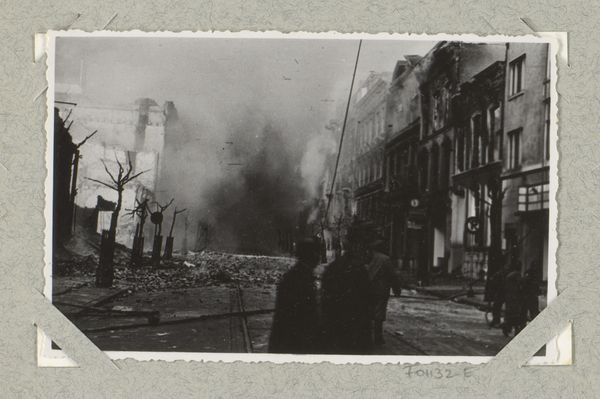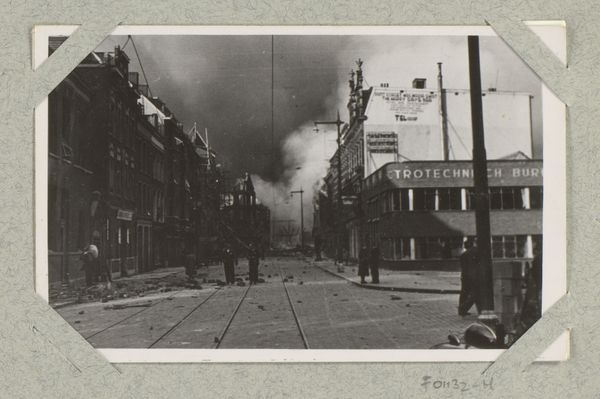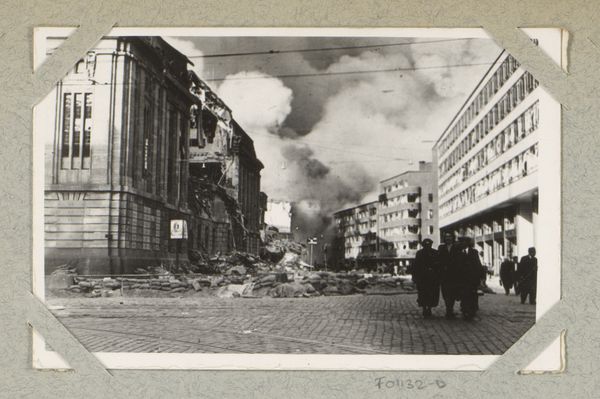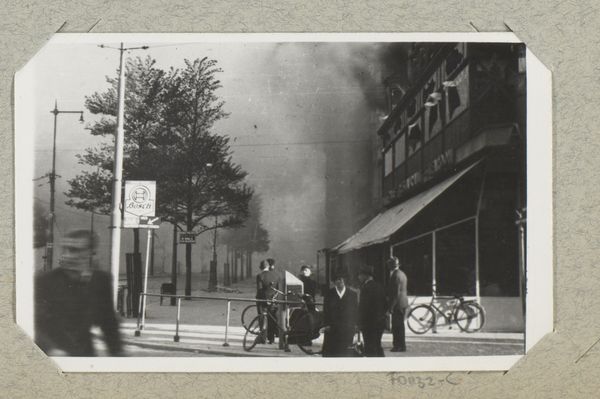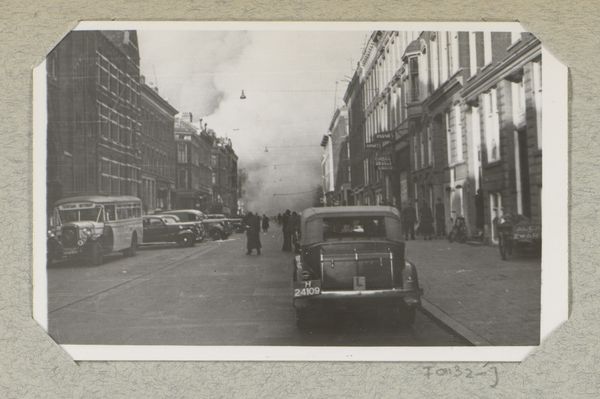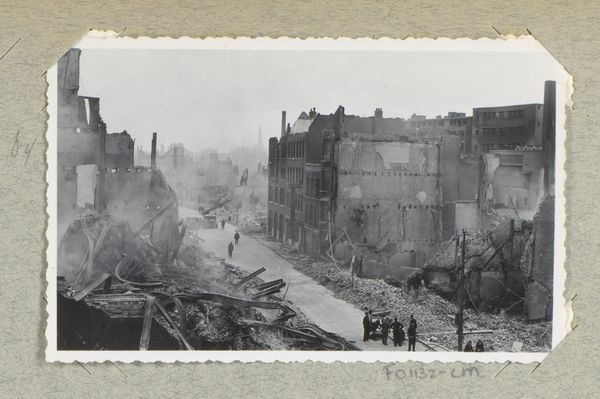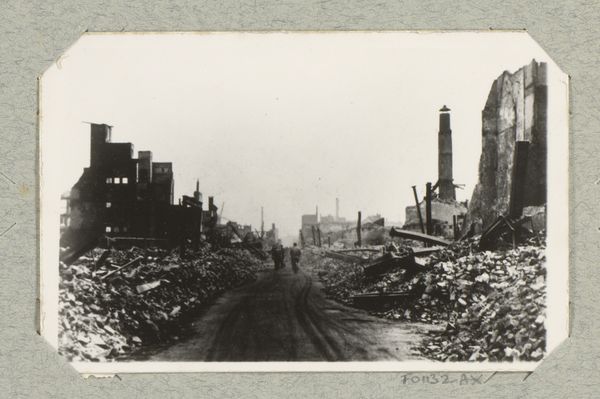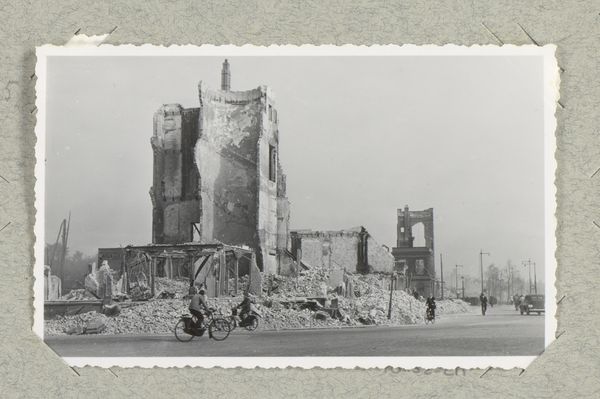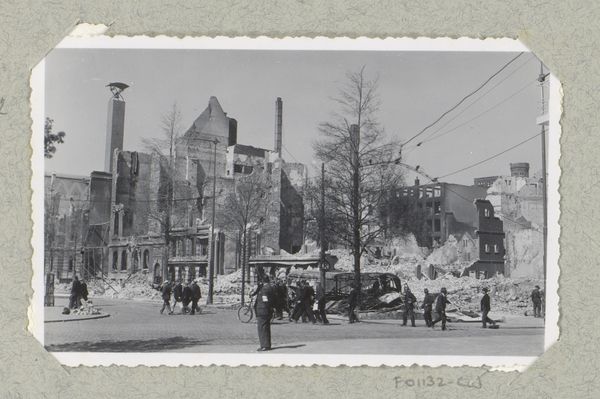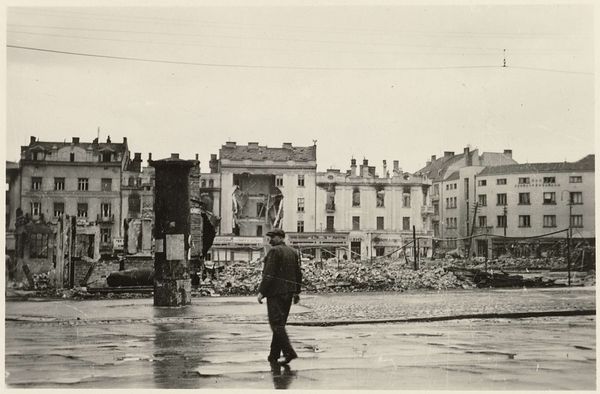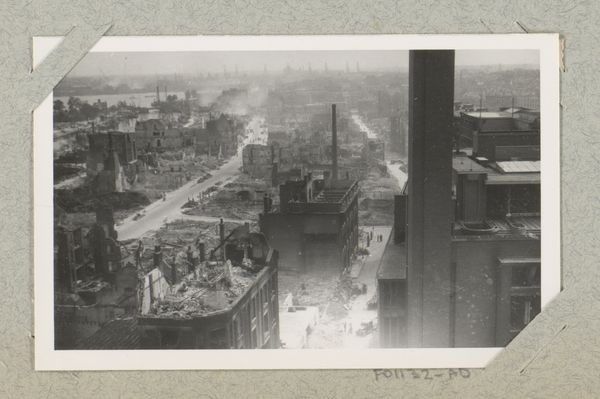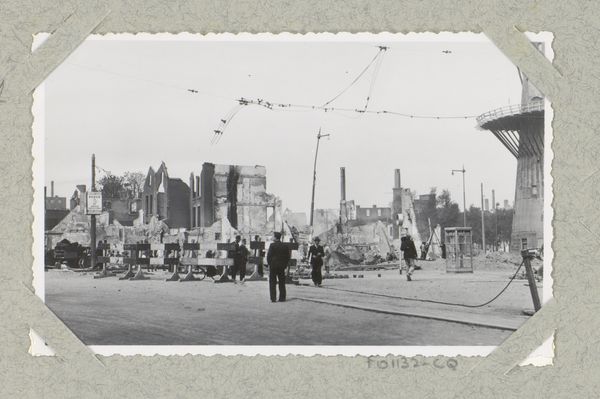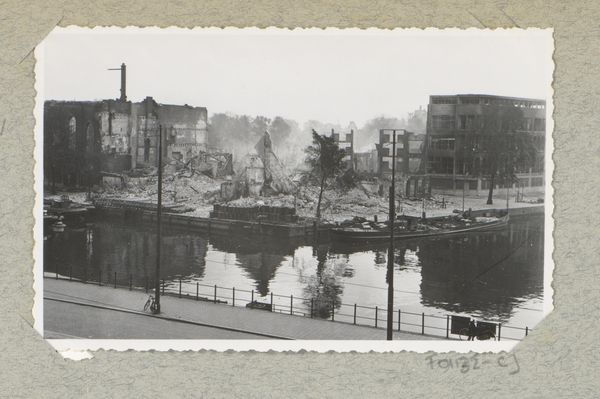
photography
#
desaturated colours
#
archive photography
#
street-photography
#
photography
#
street
#
modernism
#
realism
Dimensions: height 88 mm, width 136 mm
Copyright: Rijks Museum: Open Domain
Curator: Standing before us is a photograph by J. Nolte, titled "Ruïnes en rookwolken in de Van Oldebarneveltstraat te Rotterdam," dating roughly from 1940 to 1945. Editor: The immediate impression is devastating. The desaturated tones enhance a bleak, almost surreal atmosphere, with smoke and debris dominating the street scene. You can almost feel the grit and hear the silence that follows destruction. Curator: Indeed. Nolte's photograph captures the stark reality of war-torn Rotterdam. The street, presumably once bustling with life, is now littered with rubble. If we consider the historical context, we know Rotterdam was heavily bombed in May 1940. This photograph acts as a powerful document of the devastation. Editor: It’s also worth thinking about the framing of this scene, beyond it's value as archive photography. Notice the lone figure in the foreground. Back to us, in dark and obscured with his fedora. It asks us questions about the role of witnesses in traumatic situations, and in moments of wide spread urban and social breakdown. Curator: That perspective is certainly important, especially thinking about the broader implications. How public imagery functions within collective trauma and memory construction. Also, the angle creates a depth of field emphasizing the extensive destruction. Editor: Absolutely. And this isn’t just a photo about the past. In so many parts of the world this is the daily lived present. It's a visual prompt that highlights systemic failures. Whether through war, climate, or poverty. Nolte's work speaks across divides, highlighting both what we endure, and what must change. Curator: I agree. By looking at historical events, like the Rotterdam Blitz through photography, we are invited to analyze not only this event, but also how the politics of the archive influence public memory. Editor: Right. Understanding art history also involves pushing into uncomfortable and necessary conversations around what has been, what is, and what might be. Curator: Precisely, by viewing this photographic image, the observer participates in that cultural process and, potentially, to broader forms of change.
Comments
No comments
Be the first to comment and join the conversation on the ultimate creative platform.
